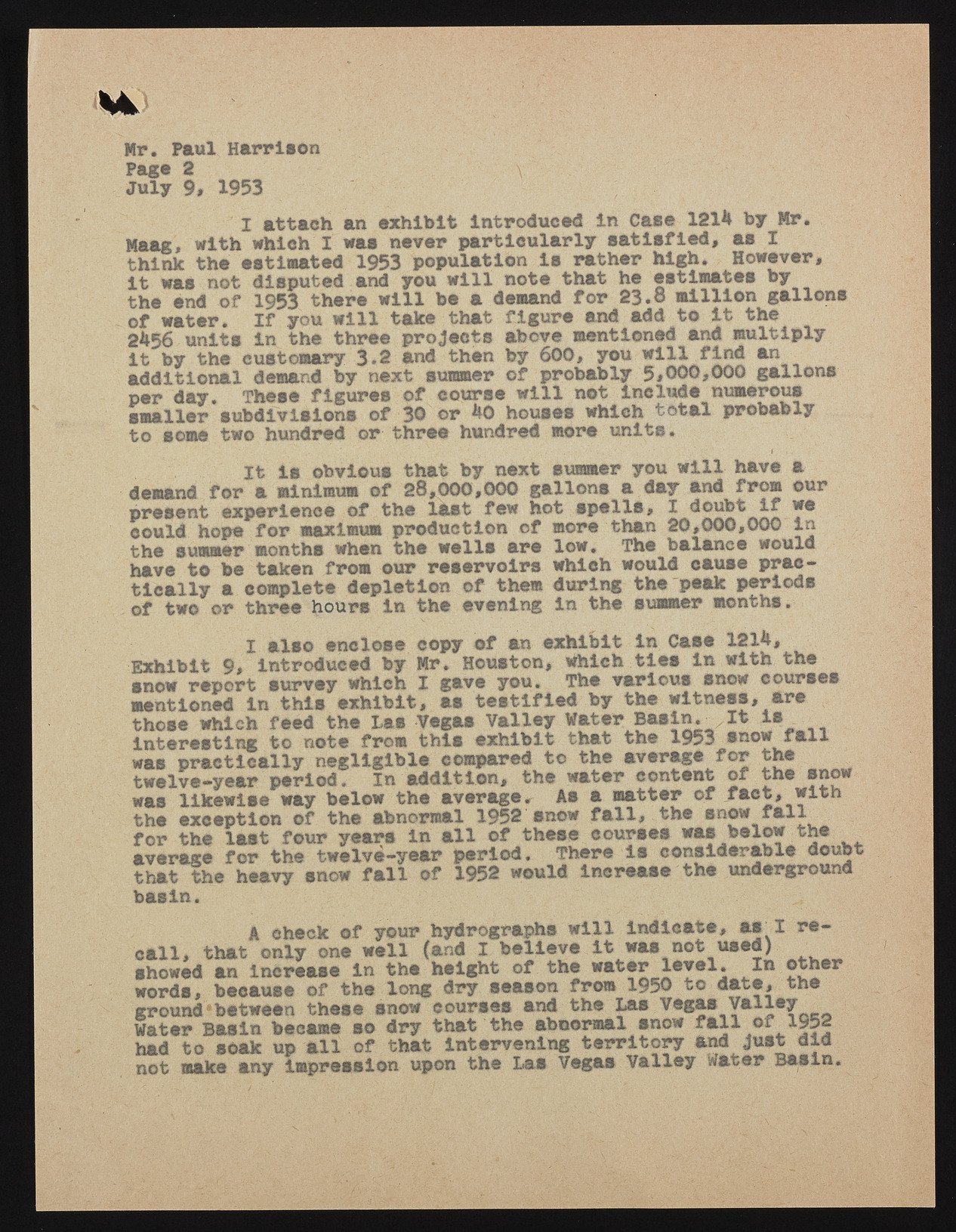Copyright & Fair-use Agreement
UNLV Special Collections provides copies of materials to facilitate private study, scholarship, or research. Material not in the public domain may be used according to fair use of copyrighted materials as defined by copyright law. Please cite us.
Please note that UNLV may not own the copyright to these materials and cannot provide permission to publish or distribute materials when UNLV is not the copyright holder. The user is solely responsible for determining the copyright status of materials and obtaining permission to use material from the copyright holder and for determining whether any permissions relating to any other rights are necessary for the intended use, and for obtaining all required permissions beyond that allowed by fair use.
Read more about our reproduction and use policy.
I agree.Information
Digital ID
Permalink
Details
More Info
Rights
Digital Provenance
Publisher
Transcription
Mr. Paul Harrison Page 2 July 9, 1953 I attach an exhibit introduced in Case 1214 by Mr. Maag, with which I waa never particularly satisfied, as I think the estimated 1953 population is rather high. However, it waa not disputed and you will note that he estimates by the end of 1953 there will be a demand for 23.8 million gallons of water. If you will take that figure and add to it the 2456 units in the three projects above mentioned and multiply it by the customary 3.2 and then by 600, you will find an. additional demand by next summer of probably 5,000,000 gallons per day. These figures of course will not include numerous smaller subdivisions of 30 or 40 houses which total probably to some two hundred or three hundred more units. It is obvious that by next summer you will have a demand for a minimum of 28,000,000 gallons a day and from our present experience of the last few hot spells, I doubt if we could hope for maximum production of more than 20,000,000 in the summer months when the wells are low. The balance would have to be taken from our reservoirs which would cause practically a complete depletion of them during the peak periods of two or three hours in the evening in the summer months. I also enclose copy of an exhibit in Case 1214, Exhibit 9, introduced by Mr. Houston, which ties in with the snow report survey which I gave you. The various snow courses mentioned in this exhibit, as testified by the witness, are those which feed the Las Vegas Valley Water Basln.^It is interesting to note from this exhibit that the 1953 snow fall was practically negligible compared to the average for the twelve-year period. In addition, the water content of the snow was likewise way below the averager As a matter of fact, with the exception of the abnormal 1952 snow fall, the snow fall for the last four years in all of these courses was below the average for the twelve-year period. There is considerable doubt that the heavy snow fall of 1952 would increase the underground basin. A check ©f your hydrographs will indicate, aar I recall, that only one well (and I believe it was not used) _ showed an increase in the height of the water level. In other words, because of the long dry season from 1950 to date, the ground between these snow courses and the Las Vegas Valley^ Water Basin became so dry that the abnormal anew fall of 1952 had to soak up all of that intervening territory and Just fjg not make any impression upon the Las Vegas Valley Water 8SSln.

